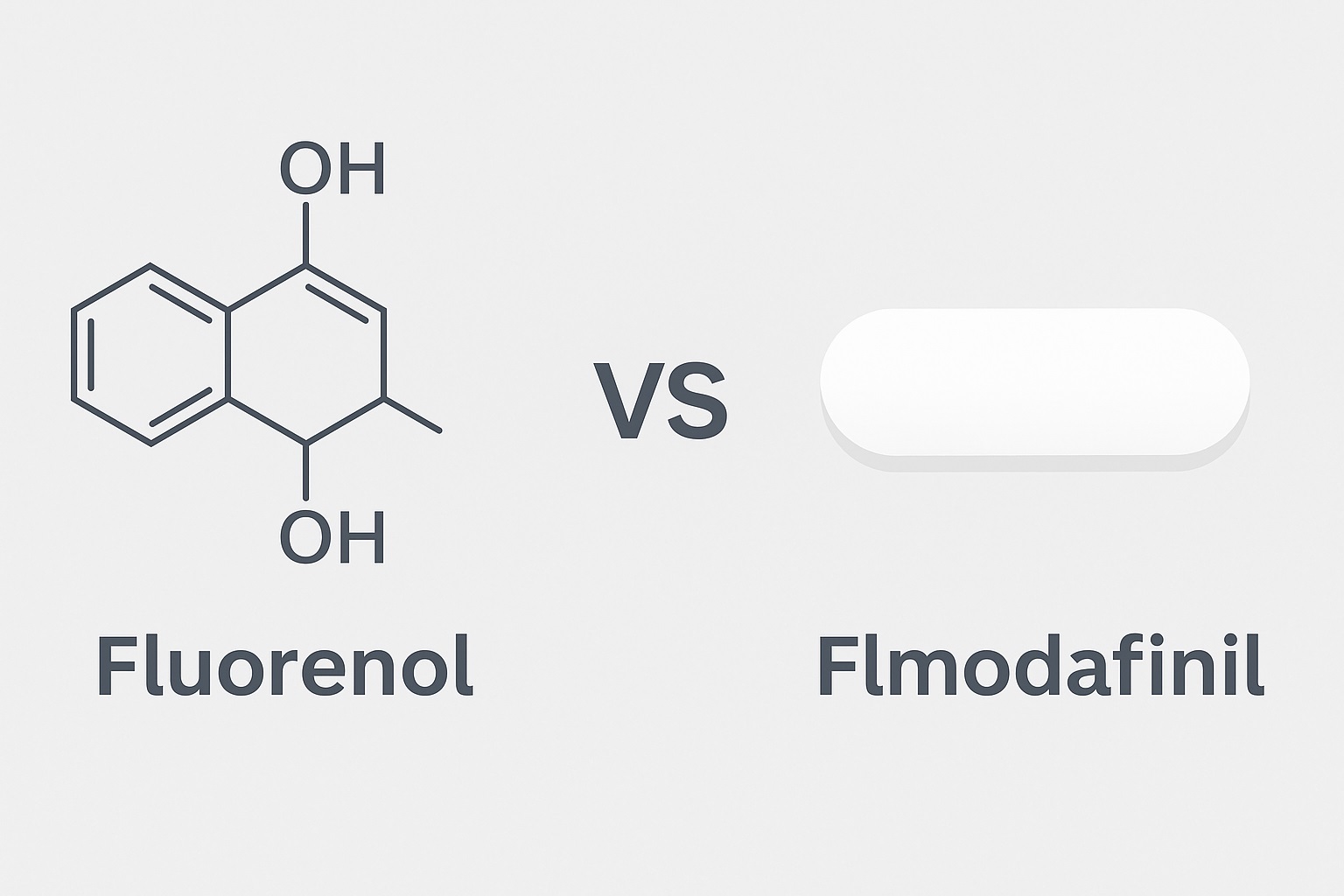The search for safe and effective cognitive enhancers has introduced a wide range of substances beyond mainstream options like modafinil and armodafinil. Two lesser-known compounds that occasionally surface in nootropic discussions are Fluorenol and Flmodafinil (CRL-40,940, also known as bisfluoromodafinil). While both have ties to the wakefulness-promoting family of compounds, their pharmacology, evidence base, and practical use differ dramatically. This article explores how they compare.
What Is Fluorenol?
Fluorenol, or 9-hydroxyfluorene, is an organic compound originally studied as a potential eugeroic (wakefulness-promoting drug). It gained attention after anecdotal reports suggested it could act on dopamine transporters similar to modafinil.
- Research status: Very limited. Only a handful of studies exist, and none have confirmed it as safe or effective in humans for therapeutic use.
- Effects (anecdotal reports): Mild stimulation, increased focus, and reduced fatigue.
- Concerns: Lack of safety data, poor clinical backing, and potential toxicity due to its chemical structure, which differs significantly from clinically approved eugeroics.
What Is Flmodafinil?
Flmodafinil (CRL-40,940) is a structural analog of modafinil, designed to improve its pharmacokinetics and effectiveness. Sometimes referred to as bisfluoromodafinil, it contains additional fluorine atoms, which may alter its absorption and duration.
- Research status: More advanced than Fluorenol but still limited; tested in preclinical studies, with some pharmacological similarities to modafinil.
- Effects (reports and early findings): Promotes wakefulness, alertness, and focus, with a smoother onset and possibly longer duration than modafinil.
- Concerns: Still not FDA-approved, scarce human clinical trials, and uncertain long-term safety.
Mechanisms of Action
- Fluorenol: Suggested to inhibit dopamine reuptake weakly, but lacks robust evidence. Its similarity to modafinil is speculative.
- Flmodafinil: Like modafinil, it appears to act on dopamine transporters and orexin pathways, explaining its wakefulness-promoting qualities.
Legality and Availability
- Fluorenol: Never advanced to pharmaceutical development; generally unavailable in legitimate markets. Sometimes discussed in research-chemical communities but not sold through regulated channels.
- Flmodafinil: Classified as a research chemical; occasionally sold online but not approved by regulatory agencies like the FDA, EMA, or TGA.
Safety Considerations
- Fluorenol: Insufficient data to consider it safe. Lack of toxicology studies raises concerns.
- Flmodafinil: Likely shares some safety characteristics with modafinil but remains unverified in long-term human use. Risks include insomnia, headaches, and cardiovascular stress, extrapolated from its parent compound.
Practical Takeaways
- Fluorenol: More of a curiosity than a serious nootropic candidate, with virtually no medical endorsement.
- Flmodafinil: Holds potential as a next-generation eugeroic, but without regulatory approval, its use remains experimental and legally ambiguous.
Conclusion
When comparing Fluorenol vs. Flmodafinil, the contrast is stark. Fluorenol is a fringe compound with little scientific validation and questionable safety. Flmodafinil, on the other hand, has stronger ties to modafinil’s pharmacology and could one day serve as a refined alternative—though it remains unapproved and under-researched.
For now, individuals seeking reliable wakefulness-promoting agents should rely on established options like modafinil or armodafinil, or some oher substances from the list of eugeroics which carry clinical validation and a safer profile.
